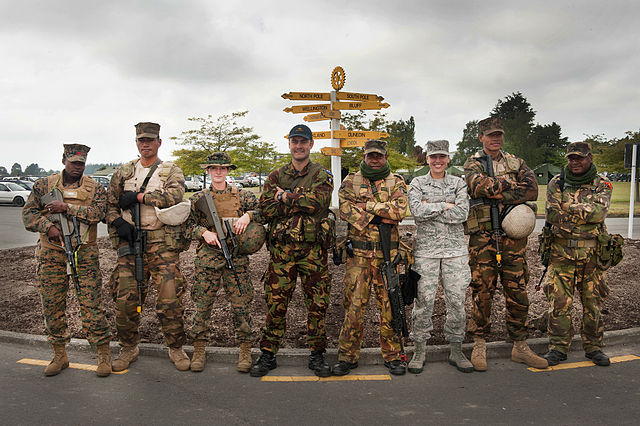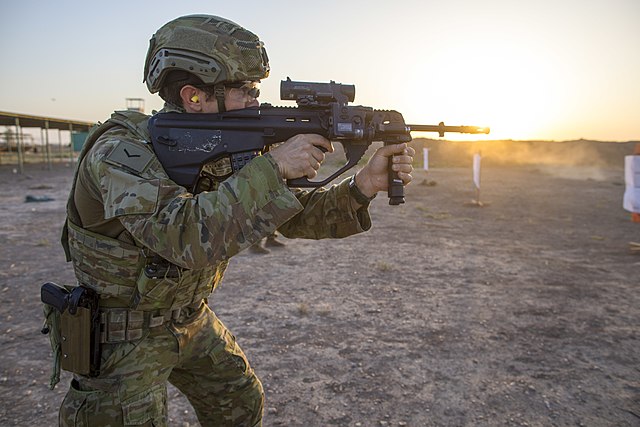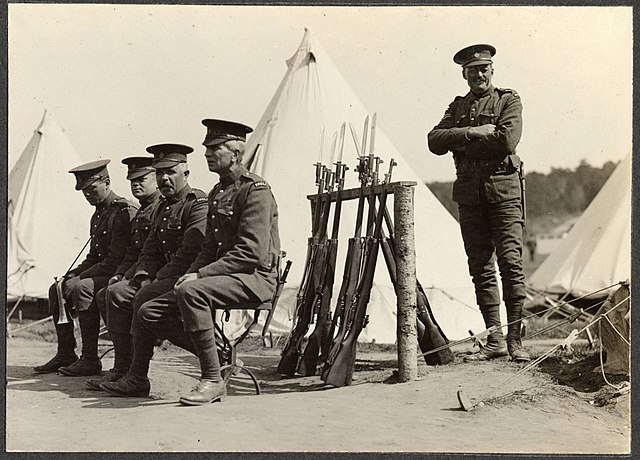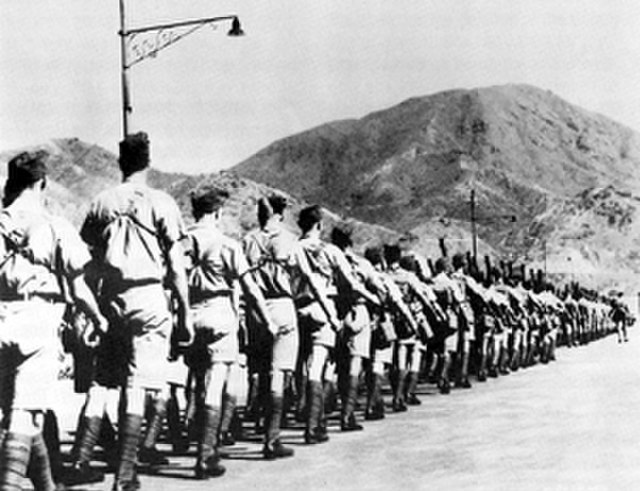The Battle Dress Uniform (BDU) is a camouflaged combat uniform that was used by the United States Armed Forces as their standard combat uniform from the early 1980s to the mid-2000s. Since then, it has been replaced or supplanted in every branch of the U.S. Armed Forces.
U.S. Marine Corps BDU blouse in woodland pattern, wearer's nametape removed. The ironed-on "EGA" on the breast pocket is barely visible due to wear.
A man and woman modelling early prototypes of the BDU in 1980
U.S. Air Force Security Forces Defenders train at Fort Huachuca, Arizona in October 2004, wearing BDUs
A U.S. Air Force missile maintainer, wearing a BDU, inspects an ICBM guidance system in March 2006
A combat uniform, also called field uniform, battledress or military fatigues, is a casual type of uniform used by military, police, fire and other public uniformed services for everyday fieldwork and combat duty purposes, as opposed to dress uniforms worn in functions and parades. It generally consists of a jacket, trousers and shirt or T-shirt, all cut to be looser and more comfortable than more formal uniforms. Design may depend on regiment or service branch, e.g. army, navy, air force, marines, etc. In the army branches, fabrics tend to come in camouflage, disruptive pattern or else green, brown or khaki monochrome, in order to approximate the background and make the soldier less visible in nature. In Western dress codes, field uniform is considered equivalent to civilian casual wear. As such, field uniform is considered less formal than service dress uniform, generally aimed at office or staff use, as well as mess dress uniform, and full dress uniform.

Military service members of different nationalities wearing a variety of combat uniforms in 2013.
An Australian soldier wearing the Australian Multicam Camouflage Uniform while firing his rifle
Canadian soldiers in service dress during the First World War
A Canadian contingent in Hong Kong wearing Khaki Drill uniform








